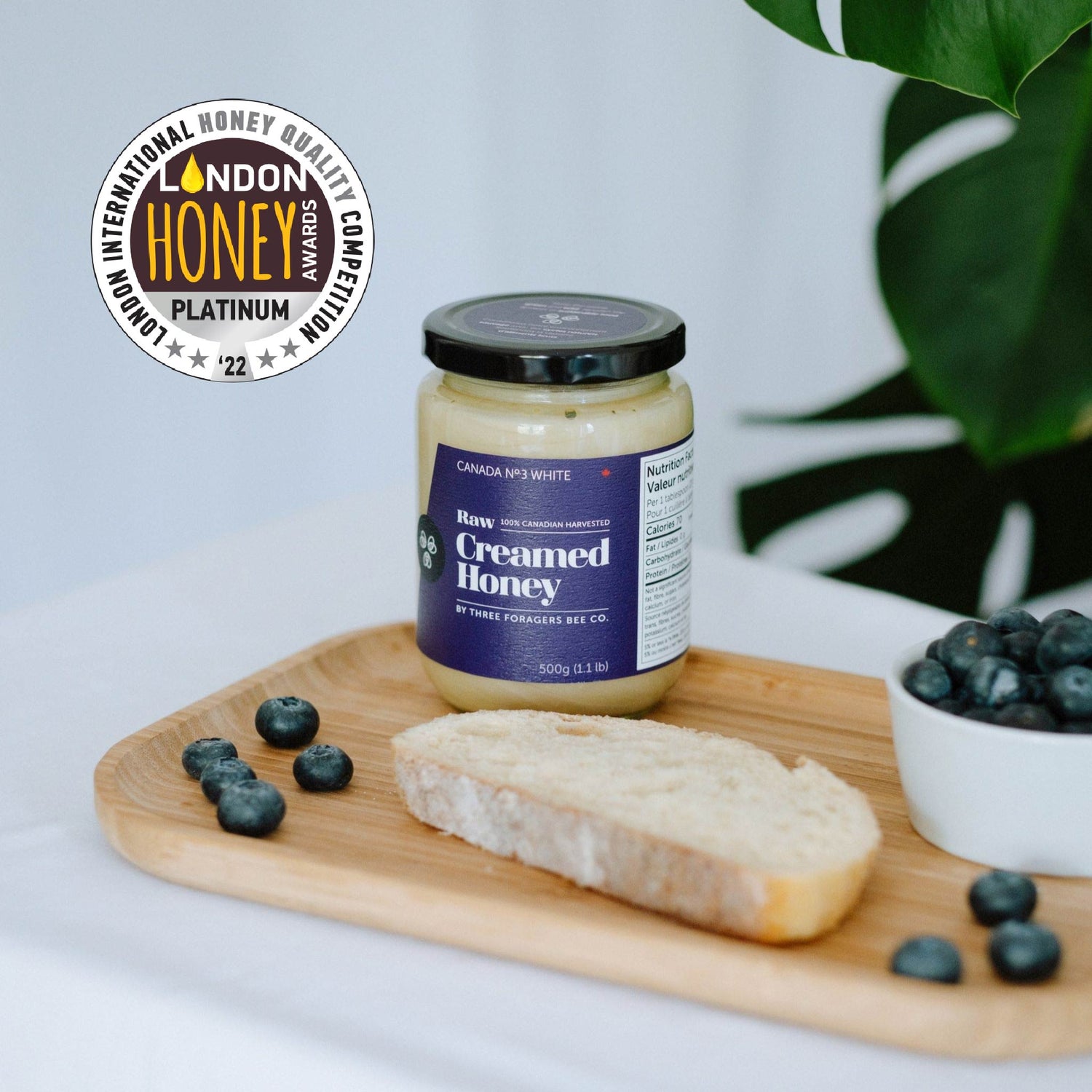We’ve already talked about what goes on within a beehive, but have you ever wondered what honey bees do during the winter? In some species of bees and wasps, only the queen survives the cold frosty months. Then, when spring hits, the queen reestablishes an entirely new colony. However, honey bees remain active all year long, spending winters in their hive, living off of the raw honey they built up during the year. As beekeepers it’s essential to leave enough honey in their hives so they can survive until spring.
Bees Need Honey To Survive The Winter
During the foraging months, honey bees travel miles in search of flowers to drink their nectar. Back at the hive, they will turn this nectar into sweet raw honey, which is stored for winter consumption. A colony can produce 300 lbs of honey a year, much more than the bees need during the cold winter months. When harvesting the raw honey, it’s vital to leave enough to ensure the bees survival.
In the late fall, when the flowers begin to disappear, worker bees will push out all of the drones, forcing them to starve or freeze. It’s a harsh reality, but necessary for the hive's survival. Drones would eat too much of the honey reserves, jeopardizing the survival of the entire colony. The queen bee will also stop laying eggs during this time.
How Bees Stay Warm
When the temperature drops below 13°C, the bees will gather in their hive preparing for the long cold months ahead. Our hives in Saskatchewan get wrapped with insulation to prevent loss of heat, which helps to maintain a stable temperature. The wrapped bees will surround the queen and begin to vibrate. As temperatures drop, the clusters tighten up, constantly shaking to stay warm. Temperatures inside the hive can even reach over 30°C! On Vancouver Island where winters are much more mild, the hives do not get wrapped but instead are given a water resistant roof to prevent buildup of excessive moisture from the unforgiving coastal winter rains. As bees on the outside get cold, they will push to themselves to the centre, letting other bees take a turn on the outside. The fuel that powers the bees all winter is, of course, honey!
Cleaning Out The Hive
During long winter spells, the bee cluster can be packed so tight that they cannot move. If they run out of nearby honey, they can starve inside the hive. When a warm spell hits, the rest of the bees will take a cleansing flight, removing any dead bodies from the hive. Bees also never defecate inside their hive to maintain cleanliness so they will take these warm instances to stretch their wings and enjoy a quick bathroom break.
Honey Bees In Spring
When temperatures rise in the spring, the honey bees waste no time in getting back to work. Drones are re-introduced to the hive, workers search for flowers, and the race to build up honey reserves for the next winter begins. At Three Foragers Bee Co., we only take what nature can replenish. We love our bees and keep them cozy all winter long, ensuring they have enough raw honey and warmth to survive. If you have any questions about our honey bees in the winter, send us a message on Facebook or leave a comment below. We want to help dispell any beekeeping myths.


